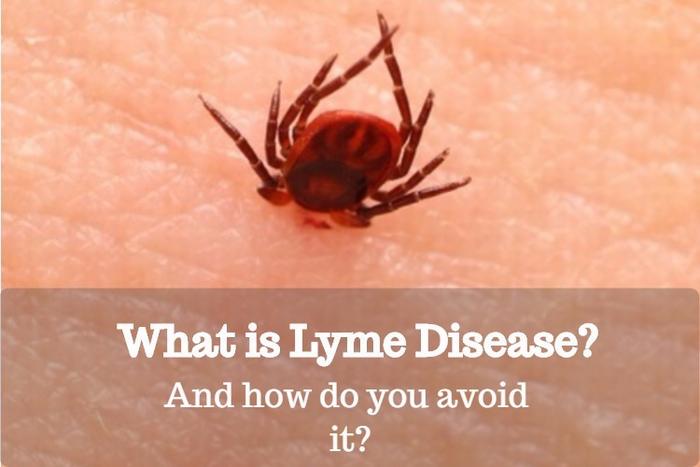What is Lyme disease? Symptoms – Diagnosis – Treatment – Prevent
Useful and important information about Lyme disease symptoms
Lyme disease is a dangerous disease which will occur in all people, especially kids. Therefore, the post will show necessary and useful information about Lyme disease including its symptoms, treatments, and preventions.
-
What is Lyme disease?
Lyme disease is an infectious disease caused by the bacteria Borrelia burgdorferi which spreads from animals to humans through a bite. Disease-causing animals are mainly ticks which are too small to see, so most people with Lyme disease usually do not find bites. After being bitten for about a week, the skin is bitten often the rash, red form of halo spread to the surrounding skin, but it is not too full. Most rash positions do not show anything like itching..
-
Lyme disease symptoms
Lyme disease is divided into three main stages and the symptoms the will depend on the stage of the disease, including
- Step 1: Inception
Symptoms begin to appear within 1 to 2 weeks of the time of the bite. One of the earliest and most common signs is a rash which means that bacteria are spreading around the patient’s body. The most prominent rash in the center of the bite is the edge of the halo that looks like two concentric circles. Furthermore, patients may feel hot in the rash when touched, but it rarely causes pain and itching. Typically, the rash disappears after about four weeks.
- Stage 2: Spread
The step occurs in a few weeks after the person is bitten. Bacteria begin to spread throughout the body and cause the person to develop many symptoms which is similar with flu, including
– Chills
– Fever
– Swelling of the lymph nodes
– Sore throat
– Reduce vision
– The tired
– Muscle aches
– Headache
Patients in this stage generally will feel unwell. A rash may appear in areas other than the bite and more severe symptoms may also appear such as tingling throughout the body, paralysis of one or more body parts.
- Stage 3: Spreading
It occurs when disease is not treated in stages 1 and 2. Step 3 can start weather ks or months or even years after a bite. Lyme disease symptoms in the stage includes
– Severe headache
– Osteoarthritis focuses on large joints
– Arrhythmias
– Neurological disorders are usually related to memory, mood, and sleep problems
– Temporary memory loss
– Fatigue
– Distracting
– Numbness fingers
Stage 3 is relatively severe, so you need to go to the doctor for medical diagnosis and treatment as soon as the Lyme disease symptoms appear.
-
Diagnosis of Lyme disease
Lyme disease is primarily diagnosed through blood tests which have to do one or more weeks after signs of infection or characteristic symptoms such as rash. Moreover, your doctor may order you to perform tests including
– ELISA testing to see whether antibodies against B. burgdorferi are present
– Western blot analysis tests the presence of antibodies against specific proteins of B. burgdorferi. Usually applied after ELISA for positive results
– PCR gene amplification is primarily used to assess people with Lyme disease who develop continuous arthritis symptoms or other symptoms associated with the nervous system.
-
Treatment of Lyme disease
Lyme disease is most likely to be treated when the patient is in stage 1. Patients usually need only antibiotics for oral doses ranging from 14 to 21 days to completely destroy the bacteria. Commonly used medicines include
– Doxycycline for adults and children over 8 years of age
– Cefuroxime and amoxicillin for adults, infants, and breastfeeding women
However, if you are staying in stage 2 and 3 of Lyme disease, the treatment will prolong from 14 to 21 days with intravenous antibiotics. Patients can eliminate the disease-causing bacteria, but the improvement of the symptoms usually occurs more slowly. Once the bacteria are destroyed, arthritis symptoms may persist, and the current medical situation has not determined the reason. People with a history of autoimmune disease have a higher risk of recurrence of arthritis after Lyme disease treatment.
-
Prevent Lyme disease
Since ticks are the primary cause of Lyme disease, the best way to prevent it is to remove it from your environment and protect yourself from getting bitten.
You can refer to some suggestions below
– Wear long pants and a long-sleeved shirt when outdoors
– Keep the surrounding environment clean, cleansing corners or places where ticks can live and grow, especially the trees.
– Use insecticides periodically
– Do not feed domestic animals such as dogs and cats. If so, you should wash them regularly and use safe insecticides to ensure maximum protection of the tick habitat.
– Be cautious even if you have had Lyme disease. After curing the disease, although the body produces certain antibodies, it many still develops the disease more than once.
Hope that the post brings useful and necessary information about Lyme disease to all readers. Therefore, if you have these Lyme disease symptoms, you should see a doctor right to treat as soon as possible.
See more:
1- What is lactose intolerance? symptoms, cause, treatment, how to prevent
2- What is Gout? causes, symptoms, diagnosing, treatment, how to prevent Gout
3- What is a sinus infection? symptoms, cause, treat, prevent the sinus infection
4- What is chronic fatigue syndrome? Symptoms, causes, risks, treatment, prevent
5- What is strep throat? symptoms, causes, treatments, diagnose, prevent
6- What is irritable bowel syndrome (IBS)? Causes, Treatments
7- What is pelvic inflammatory disease (PID)? Causes – Signs – How to treat – How to prevent
8- What is polycystic ovary syndrome (PCOS)? Signs – The main cause – Treat
9- What is diabetes? Types – Symptoms – Complications of diabetes
Content is interested:


